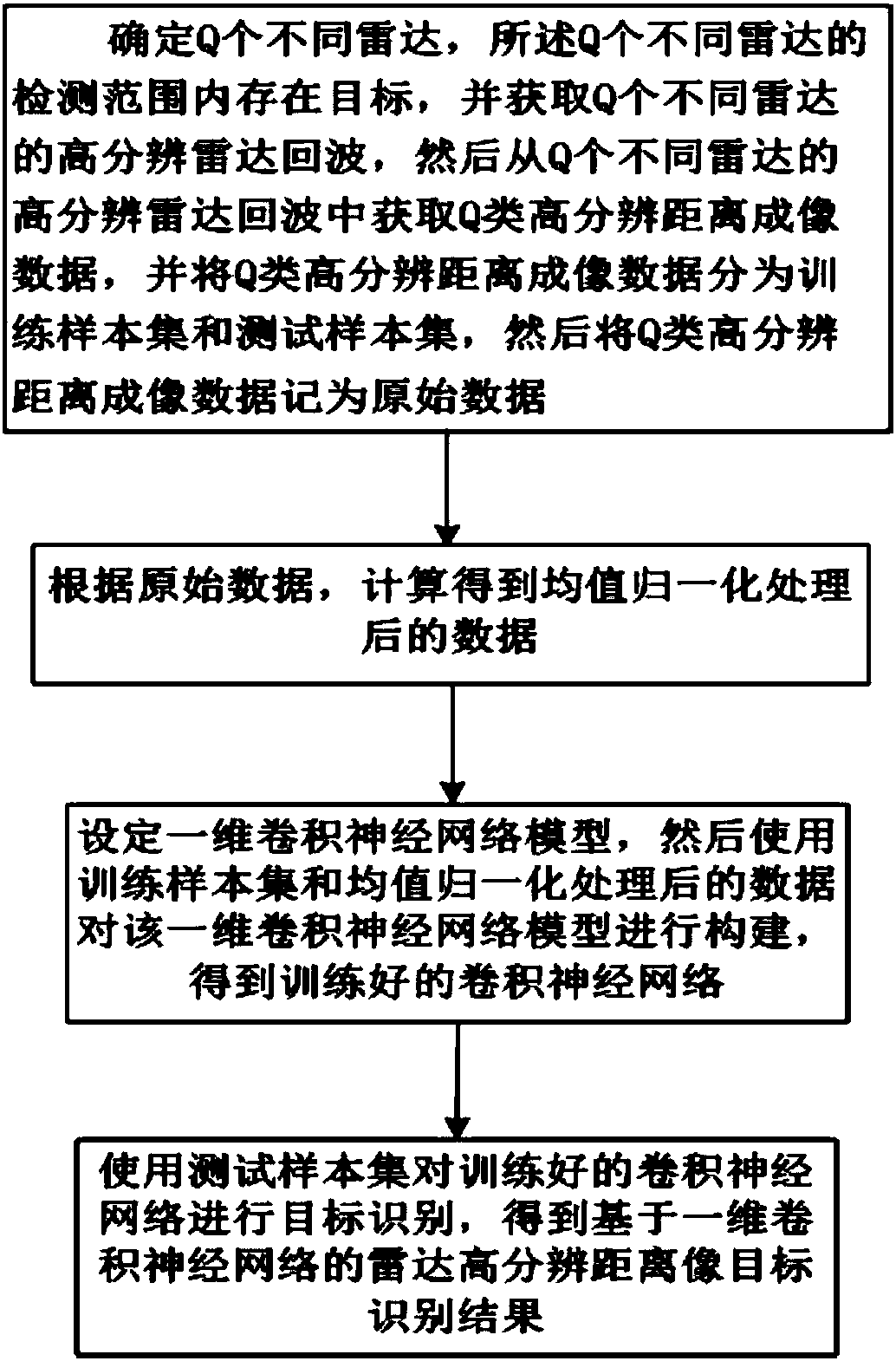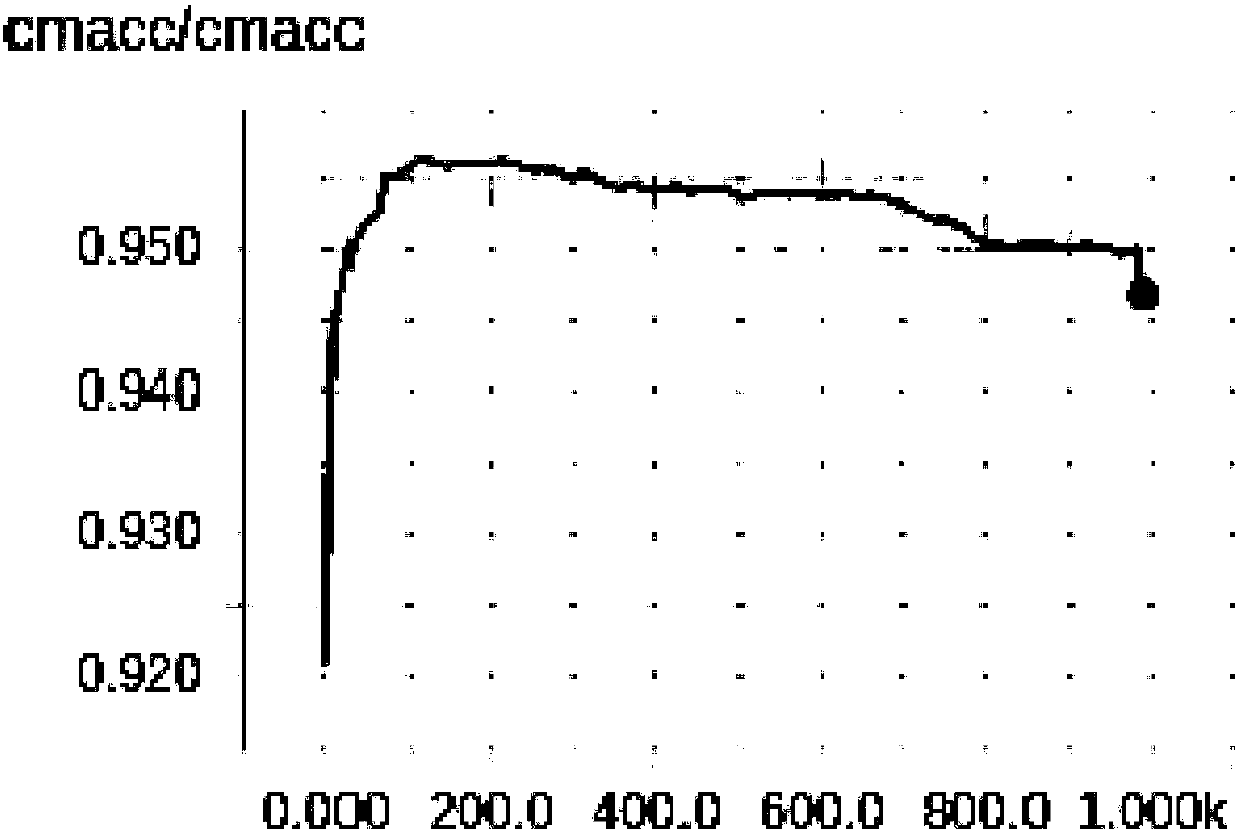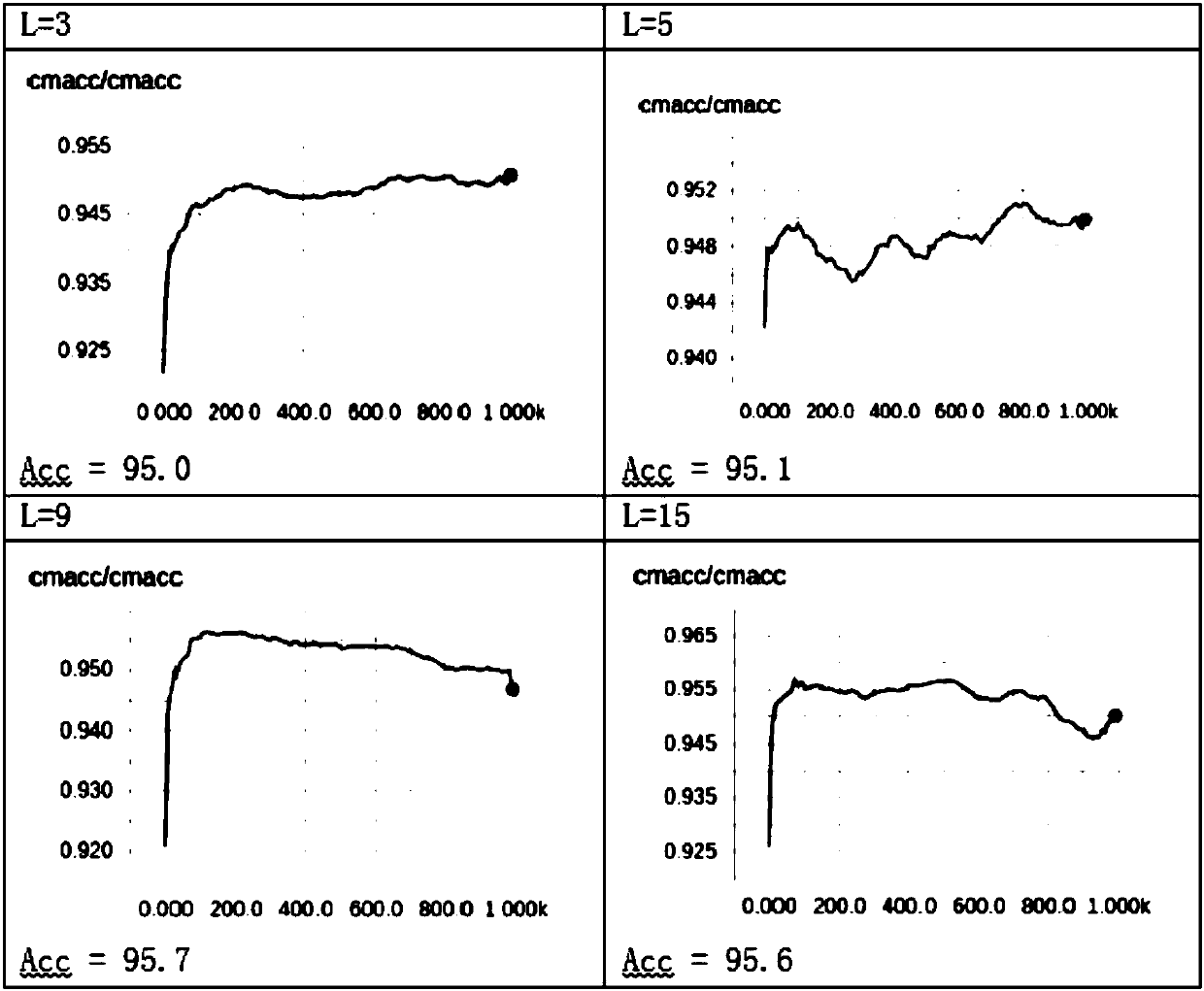Radar high-resolution range profile target identification method based on one-dimensional convolutional neural network
A convolutional neural network and high-resolution range image technology, applied in the field of radar, can solve the problem of low target recognition accuracy, and achieve the effects of improved recognition rate, high target recognition rate and strong robustness
- Summary
- Abstract
- Description
- Claims
- Application Information
AI Technical Summary
Problems solved by technology
Method used
Image
Examples
Embodiment Construction
[0023] refer to figure 1 , is a flow chart of a radar high-resolution range-like target recognition method based on a one-dimensional convolutional neural network of the present invention; wherein the radar high-resolution range-like target recognition method based on a one-dimensional convolutional neural network comprises the following steps:
[0024] Step 1, determine Q different radars, there are targets within the detection range of the Q different radars, and obtain the high-resolution radar echoes of the Q different radars, and then obtain Q from the high-resolution radar echoes of the Q different radars. Class high-resolution range imaging data, which are sequentially recorded as the first type high-resolution range imaging data, the second type high-resolution range imaging data, ..., the Q-th type high-resolution range imaging data, and each radar corresponds to a class of high-resolution range imaging data data, and the Q-type high-resolution imaging data are differ...
PUM
 Login to View More
Login to View More Abstract
Description
Claims
Application Information
 Login to View More
Login to View More - R&D
- Intellectual Property
- Life Sciences
- Materials
- Tech Scout
- Unparalleled Data Quality
- Higher Quality Content
- 60% Fewer Hallucinations
Browse by: Latest US Patents, China's latest patents, Technical Efficacy Thesaurus, Application Domain, Technology Topic, Popular Technical Reports.
© 2025 PatSnap. All rights reserved.Legal|Privacy policy|Modern Slavery Act Transparency Statement|Sitemap|About US| Contact US: help@patsnap.com



